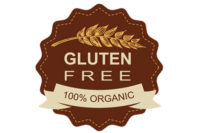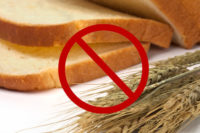When the Food Allergen Labeling and Consumer Protection Act (FALCPA) was passed in 2004 and came into force in January 2006, it required manufacturers to declare eight major allergens (which included wheat but not barley and rye—two other gluten sources) on the labels of all packaged foods under the Food and Drug Administration’s (FDA) purview. FALCPA also required that the FDA develop a rule for the term “gluten-free” by August 2006 and a final rule by August 2008. The proposed gluten-free rule was released Jan. 23, 2007.
On Aug. 3, 2011, the FDA re-opened the comment period for the proposed rule to share the results of the report titled “Health Hazard Assessment for Effects of Gluten Exposure in Individuals with Celiac Disease: Determination of Tolerable Daily Intake Levels and Levels of Concern for Gluten” and to seek further comments about this safety assessment and whether it should affect the FDA’s proposed definition of gluten-free. (As of press time, the final rule was not yet released.) With no official regulation for the term “gluten-free”—other than that it must be truthful and not misleading—manufacturers have been left on their own to determine how to communicate the gluten-free status of products.
In Canada, a gluten-free regulation was established in 1995 called B.24.018. The legislation states that, “No person shall label, package, sell or advertise a food in a manner likely to create an impression that it is a gluten-free food unless the food does not contain wheat, including spelt and kamut, or oats, barley, rye or triticale or any part thereof.”
In February 2011, a new Health Canada regulation called “Schedule 1220 Enhanced Labelling of Food Allergen and Gluten Sources and Added Sulphites” required that manufacturers declare all major allergens (10), gluten sources and sulphites (over 10 parts per million) in all packaged products as of Aug. 4, 2012. As a result of changes to 1220, a consequential amendment to the gluten-free regulation, occurred. The definition of gluten means any gluten protein or any modified gluten protein, including any gluten protein fraction that is derived from barley, oats, rye, triticale or wheat. In June 2012, Health Canada also released a guidance document that established a 20 ppm threshold for gluten-free claims and information on gluten detection methodologies.
Unfortunately, manufacturers cannot make a gluten-free claim on products that contain pure, uncontaminated oats, even though Health Canada’s “Position on the Introduction of Oats to the Diet of Individuals Diagnosed with Celiac Disease” established that the majority of individuals can tolerate these pure oats. The Canadian Celiac Association also has a position statement indicating that the majority of people with celiac disease can tolerate moderate amounts of pure, uncontaminated oats.
In order for Schedule 1220 to be passed, the list of prohibited gluten-containing grains was not able to be modified, so oats remained on the list. Health Canada is currently reviewing the labeling of pure, uncontaminated oats for products labeled gluten-free.
Gluten-free marketing
A wide variety of terms, symbols, certifications, gluten-testing procedures, gluten ppm levels and other statements are used on package labels, on websites and/or by consumer call centers. An adapted excerpt from my book, Gluten-Free Diet: A Comprehensive Resource Guide, demonstrates the confusing language consumers must deal with when reading labels and contacting manufacturers:
•Ingredient and gluten-free declarations
•Ingredients or components of ingredients that contain gluten (wheat, rye and barley) are always listed on the product label.
•Ingredients or components of ingredients that contain wheat are always listed on the product label.
•There are no gluten-containing ingredients in the product or they are made with “non-gluten” ingredients.
•May contain traces of gluten.
•May contain traces of wheat.
•“Gluten-free.”
•No mention of “gluten-free.”
•The company will not make a statement about the “gluten-free” status of the product until the final FDA gluten-free rule is available.
Manufacturing facilities
•Product is made in a dedicated gluten-free facility.
•Product is made on dedicated, gluten-free equipment in a shared facility.
•Product is made in a shared facility on shared equipment that is thoroughly cleaned, sanitized and tested for gluten.
Gluten testing and methodologies declarations
•Product is not tested for gluten.
•Product is tested for gluten.
•Product is tested for gluten using the ELISA test.
•Product contains less than 5 ppm, 10 ppm or 20 ppm.
Certification program and symbols
•Gluten-Free Certification Organization (GFCO), a program of The Gluten Intolerance Group, www.gfco.org
•CSA Recognition Seal Program, a program of the Celiac Sprue Association, www.
csaceliacs.info/csa_recognition_seal.jsp
•Gluten-Free Certification, a program of the National Foundation for Celiac Awareness and Quality Assurance International, www.
celiaccentral.org/gluten-free-certification
Gluten-Free Certification Program (GFCP), a program of the Canadian Celiac Association, www.glutenfreecertification.ca
References U.S.:
Proposed Gluten-Free Rule www.gpo.gov/fdsys/pkg/
FR-2007-01-23/pdf/E7-843.pdf
Reopening of Comment Period www.gpo.gov/fdsys/pkg/FR-2011-08-03/pdf/2011-19620.pdf
References Canada:
Health Canada’s Position on Gluten-Free Claims
www.hc-sc.gc.ca/fn-an/securit/allerg/cel-coe/
gluten-position-eng.php
Health Canada’s Position on Oats
www.hc-sc.gc.ca/fn-an/securit/allerg/cel-coe/oats_
cd-avoine-eng.php
Shelley Case, RD, is a registered dietitian and leading international expert on celiac disease and the gluten-free diet. Case is also a member of the Medical Advisory Boards of the Celiac Disease Foundation, Gluten Intolerance Group and Canadian Celiac Association and the Scientific Advisory Board of the Grain Foods Foundation. She also has a national best-selling book, Gluten-Free Diet: A Comprehensive Resource Guide. Visit www.glutenfreediet.ca for more information.




